
Fire Island: A Serene Coastal Escape
Discover Fire Island: A tranquil retreat with pristine beaches, charming hamlets, and vibrant culture just a ferry ride away from New York City.
Fire Island is a slender, barrier island off the southern coast of Long Island, New York. Known for its pristine beaches, tranquil atmosphere, and charming small communities, Fire Island offers a perfect escape from the hustle and bustle of city life. The island is only accessible by ferry, adding to its secluded charm and ensuring its natural beauty remains unspoiled. Fire Island boasts 32 miles of sandy shores, ideal for sunbathing, swimming, and beachcombing. The island is home to several unique hamlets, each with its own distinct character. Ocean Beach, the island's unofficial capital, is known for its lively nightlife and bustling scene. On the other hand, communities like Cherry Grove and Fire Island Pines are famous for their vibrant LGBTQ+ culture. Nature enthusiasts will find plenty to do on Fire Island. The island is part of the Fire Island National Seashore, which includes the Sunken Forest, a rare maritime holly forest, and the Fire Island Lighthouse, a historic beacon offering panoramic views. Whether you're looking to relax on the beach, explore nature trails, or enjoy a night out, Fire Island has something for everyone.
Local tips in Fire Island
- Check the ferry schedule in advance as service can be limited, especially in the off-season.
- Bring cash; many small shops and restaurants do not accept credit cards.
- Pack light; most areas on Fire Island are pedestrian-only, so you'll need to carry your belongings.
- Don't miss the Sunken Forest; it's a unique natural wonder you won't find anywhere else.
- Fire Island is a popular destination for birdwatching, so bring binoculars if you're a bird enthusiast.
Fire Island: A Serene Coastal Escape
Fire Island is a slender, barrier island off the southern coast of Long Island, New York. Known for its pristine beaches, tranquil atmosphere, and charming small communities, Fire Island offers a perfect escape from the hustle and bustle of city life. The island is only accessible by ferry, adding to its secluded charm and ensuring its natural beauty remains unspoiled. Fire Island boasts 32 miles of sandy shores, ideal for sunbathing, swimming, and beachcombing. The island is home to several unique hamlets, each with its own distinct character. Ocean Beach, the island's unofficial capital, is known for its lively nightlife and bustling scene. On the other hand, communities like Cherry Grove and Fire Island Pines are famous for their vibrant LGBTQ+ culture. Nature enthusiasts will find plenty to do on Fire Island. The island is part of the Fire Island National Seashore, which includes the Sunken Forest, a rare maritime holly forest, and the Fire Island Lighthouse, a historic beacon offering panoramic views. Whether you're looking to relax on the beach, explore nature trails, or enjoy a night out, Fire Island has something for everyone.
When is the best time to go to Fire Island?
Iconic landmarks you can’t miss
Fire Island Lighthouse
Explore the Fire Island Lighthouse, a historic maritime landmark offering stunning ocean views and a glimpse into the rich history of Fire Island.

Sunken Forest
Explore the mesmerizing Sunken Forest in Fire Island, NY, where nature's tranquility and diverse wildlife create the perfect escape from daily life.

Unmissable attractions to see
Robert Moses State Park - Long Island
Explore the stunning beaches and natural beauty of Robert Moses State Park on Long Island, a perfect retreat for nature lovers and families alike.

Heckscher State Park
Discover the natural beauty of Heckscher State Park, a serene escape on Long Island featuring trails, beaches, and diverse wildlife.

Bayard Cutting Arboretum
Explore the lush landscapes and vibrant gardens of Bayard Cutting Arboretum, a tranquil escape in Great River, New York, perfect for nature lovers and tourists.

Captree State Park
Discover the serene beauty and outdoor adventures at Captree State Park, a coastal paradise in Bay Shore, New York.

Cedar Beach
Discover Cedar Beach, a stunning public beach in Babylon, NY, offering pristine sands, breathtaking sunsets, and endless recreational activities for all.

Smith Point County Park
Experience the natural beauty and recreational fun at Smith Point County Park, a coastal gem in Shirley, New York.

Shorefront Park
Experience the beauty of Shorefront Park in Patchogue, NY - a perfect blend of nature, recreation, and community spirit.

Robert Moses State Park Field 5
Discover the unspoiled beauty and recreational delights of Robert Moses State Park Field 5, a coastal haven on Long Island's majestic shores.

Long Island Game Farm Wildlife Park & Children's Zoo
Explore the wonders of wildlife at Long Island Game Farm, where fun meets education in a family-friendly setting.

Connetquot River State Park Preserve
Discover the serene beauty of Connetquot River State Park Preserve, a natural haven for hiking, fishing, and wildlife observation in Oakdale, New York.
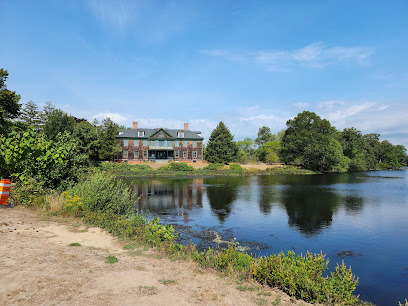
Old Bethpage Village Restoration
Discover the charm of 19th-century America at Old Bethpage Village Restoration, a unique open-air museum on Long Island.

Overlook Beach
Discover the beauty of Overlook Beach in Babylon, NY, where sun-soaked sands and family-friendly amenities await your next beach adventure.

TWA Flight 800 International Memorial and Gardens
Visit the TWA Flight 800 International Memorial and Gardens in Mastic Beach, NY, to honor the memory of those lost in the tragic 1996 flight disaster amidst serene surroundings.

Richard L. Brooks Memorial Park
Experience the tranquility and natural beauty of Richard L. Brooks Memorial Park, a serene retreat in Gilgo-Oak Beach-Captree, New York.
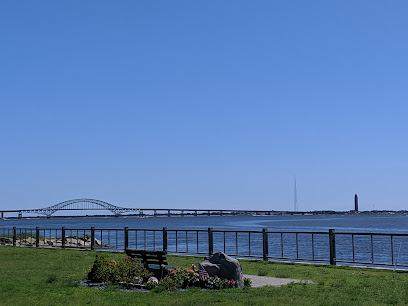
Fire Island Lighthouse
Experience the historic Fire Island Lighthouse, where maritime heritage meets stunning coastal views, perfect for all nature lovers and history enthusiasts.

Essential places to dine
Fire Island Beach House
Experience coastal bliss at Fire Island Beach House - where relaxation meets vibrant beach life in Ocean Bay Park.

Pizza Shack of Kismet
Experience the best New York-style pizza at Pizza Shack of Kismet on Fire Island - where delicious food meets stunning waterfront views.

Pines Bistro
Discover the charm and flavors of Fire Island at Pines Bistro – your go-to destination for exquisite dining experiences.

Markets, malls and hidden boutiques
RACHEL’S Restaurant & Bakery
Experience the best of American cuisine and freshly baked goods at Rachel's Restaurant & Bakery in Ocean Beach, NY.

Seaview Market
Discover fresh produce and local delights at Seaview Market, your go-to grocery store in Ocean Beach, New York.
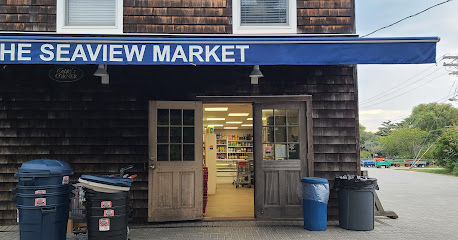
Pines Pantry
Explore the flavors of Fire Island at Pines Pantry, your go-to grocery store for local produce, baked goods, and artisanal delights.

The Pines Liquor Shop
Experience the charm of Fire Island Pines at The Pines Liquor Shop, your go-to destination for fine wines and a vibrant social scene.
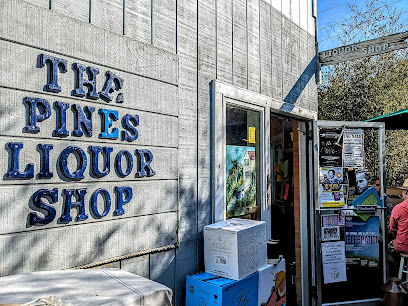
Davis Park Harbor store
Experience the local charm at Davis Park Harbor Store, your go-to spot for groceries, ice cream, and unique finds in Davis Park.

Scoops
Experience the ultimate ice cream paradise at Scoops in Ocean Beach, where every scoop is a delightful treat to savor.

Ocean Bay Park Market
Explore Ocean Bay Park Market: Your gateway to fresh produce, local delicacies, and a taste of community life in Ocean Bay Park.

Sweet Licks
Experience the joy of frozen treats at Sweet Licks, Cherry Grove's premier ice cream shop, perfect for families and friends to savor unique flavors and classic favorites.

Bambootique
Discover the charm of Bambootique in Ocean Beach, NY – a boutique that offers stylish clothing and unique accessories reflecting beach life.

Ocean Beach Hardware
Discover the charm of Ocean Beach Hardware, your local stop for beach essentials and home improvement supplies in Ocean Beach, NY.

Grove Market
Discover the charm of Grove Market in Cherry Grove, a community grocery store offering fresh local produce and artisanal delights on Fire Island.

Ice Castle
Experience the joy of delicious ice cream at the Ice Castle in Ocean Beach, NY, where every scoop is a sweet treat waiting for you.

Kismet Coffee Company - Fire Island
Discover the cozy charm of Kismet Coffee Company on Fire Island, where exceptional brews and delightful pastries await you.
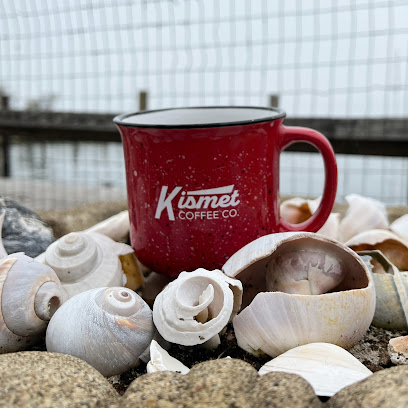
THE GALLERY Ocean Beach General Store
Explore the eclectic offerings of THE GALLERY Ocean Beach General Store, where unique gifts and local charm meet in a delightful shopping experience.

The Pantry
Explore The Pantry in Ocean Beach for fresh, local groceries and a friendly shopping experience by the shore.

Essential bars & hidden hideouts
Maguire's Bayfront Restaurant
Experience the best of American cuisine at Maguire's Bayfront Restaurant, where breathtaking views meet delicious seafood and grill favorites.

Cherry's On The Bay
Discover the lively atmosphere of Cherry's On The Bay, where exquisite dining meets electrifying nightlife in Cherry Grove.

Island Mermaid
Experience the flavors of the coast at Island Mermaid, a vibrant bar and restaurant in Ocean Beach offering seafood delights and a lively atmosphere.

Flynn's Fire Island
Experience the best of coastal dining at Flynn's Fire Island, where delicious cuisine meets stunning marina views in Ocean Bay Park.

Kismet Inn
Experience coastal dining at Kismet Inn, where fresh flavors meet stunning waterfront views in the heart of Kismet, NY.

Schooner Inn
Discover the cozy Schooner Inn in Ocean Bay Park, offering delicious Italian cuisine and refreshing drinks amidst a stunning coastal backdrop.
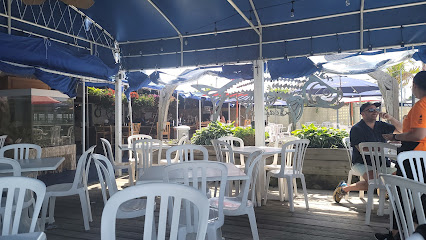
RACHEL’S Restaurant & Bakery
Discover the culinary delights of RACHEL’S Restaurant & Bakery in Ocean Beach, featuring American comfort food and irresistible baked goods.

Matthew's Seafood House
Discover Matthew's Seafood House, where fresh seafood meets a vibrant atmosphere in Ocean Beach, NY, perfect for dining or dancing.

Albatross
Discover the flavorful fusion of fresh seafood and classic American cuisine at Albatross in Ocean Beach, NY, with stunning bay views.

Castaway Bar & Grill
A coastal haven for food lovers, Castaway Bar & Grill serves up traditional American fare in a vibrant beachside setting.

Fire Island Beach House
Discover the perfect blend of relaxation and nightlife at Fire Island Beach House, your ultimate beachside retreat in Ocean Bay Park, NY.

Sand Castle
Discover the vibrant culinary experience at Sand Castle in Cherry Grove, Fire Island, where fresh flavors meet stunning coastal views.

CJ's
Experience the best of Ocean Beach dining at CJ's, home of the famous Rocket Fuel cocktail and delicious grilled delights.

The Shack
Experience the vibrant dining scene at The Shack in Bay Shore, where local flavors and live music create unforgettable moments.

Le Dock
Savor the finest seafood at Le Dock, a waterfront restaurant in Bay Shore, NY, offering a delightful dining experience with stunning views.

Local Phrases about Fire Island
-
- HelloHey
[Hey] - GoodbyeLater
[Lay-ter] - YesYeah
[Yeah] - NoNope
[Noh-p] - Please/You're welcomePlease
[Pleez] - Thank youThanks
[Th-anks] - Excuse me/SorrySorry
[Sor-ee] - How are you?How you doin'?
[How yuh doin'] - Fine. And you?I'm good. You?
[I'm good. You?] - Do you speak English?You speak English?
[Yuh speak English?] - I don't understandI don't get it
[I don't get it]
- HelloHey
-
- I'd like to see the menu, pleaseMenu, please
[Menu, please] - I don't eat meatNo meat for me
[No meat for me] - Cheers!Cheers!
[Cheers!] - I would like to pay, pleaseCheck, please
[Check, please]
- I'd like to see the menu, pleaseMenu, please
-
- Help!Help!
[Help!] - Go away!Go away!
[Go away!] - Call the Police!Call the cops!
[Call the cops!] - Call a doctor!Get a doc!
[Get a doc!] - I'm lostLost
[Lost] - I'm illSick
[Sick]
- Help!Help!
-
- I'd like to buy...I wanna buy...
[I wanna buy...] - I'm just lookingJust looking
[Just looking] - How much is it?How much?
[How much?] - That's too expensiveToo pricey
[Too pricey] - Can you lower the price?Discount?
[Discount?]
- I'd like to buy...I wanna buy...
-
- What time is it?What time?
[What time?] - It's one o'clockIt's one
[It's one] - Half past (10)Ten thirty
[Ten thur-tee] - MorningMorning
[Morning] - AfternoonAfternoon
[Afternoon] - EveningEvening
[Evening] - YesterdayYesterday
[Yesterday] - TodayToday
[Today] - TomorrowTomorrow
[Tomorrow] - 1One
[One] - 2Two
[Two] - 3Three
[Three] - 4Four
[Four] - 5Five
[Five] - 6Six
[Six] - 7Seven
[Seven] - 8Eight
[Eight] - 9Nine
[Nine] - 10Ten
[Ten]
- What time is it?What time?
-
- Where's a/the...?Where's the...?
[Where's the...?] - What's the address?Address?
[Address?] - Can you show me (on the map)?Show me the way?
[Show me the way?] - When's the next (bus)?Next bus?
[Next bus?] - A ticket (to ....)Ticket (to ...)
[Ticket (to ...)]
- Where's a/the...?Where's the...?
History of Fire Island
-
Long before European settlers arrived, Fire Island was inhabited by indigenous peoples, particularly the Secatogues, a branch of the Algonquin tribe. Their presence can be traced back thousands of years, and they utilized the island’s rich natural resources for fishing, hunting, and gathering. The first recorded European contact was in the 17th century, when Dutch and English explorers began to map the area, leading to eventual settlements.
-
In the 18th and early 19th centuries, Fire Island played a role in the burgeoning whaling industry. The island’s strategic location made it a prime spot for whalers to operate, and small communities grew around this industry. Whaling stations dotted the coastline, and the island's economy thrived on the oil and other products derived from these massive marine mammals.
-
One of Fire Island's most iconic landmarks, the Fire Island Lighthouse, was first constructed in 1826. It served as a crucial navigational aid for ships traveling the treacherous waters of the Atlantic Ocean and Long Island Sound. The original lighthouse was replaced in 1858 with a taller, more modern structure that still stands today. The lighthouse became a symbol of safety and guidance for countless mariners.
-
During the Prohibition era of the 1920s and early 1930s, Fire Island turned into a haven for bootleggers smuggling alcohol. Its relative isolation and proximity to New York City made it an ideal spot for clandestine operations. Many historical accounts suggest that secret landings and hidden stashes of liquor contributed to the island’s lore during this tumultuous period in American history.
-
Following World War II, Fire Island began to transform into a popular tourist destination. The post-war economic boom led to increased leisure time and disposable income for many Americans, who flocked to the island’s pristine beaches and quaint communities. Summer homes and vacation rentals sprang up, and the island became known for its vibrant, bohemian culture.
-
Fire Island holds a special place in LGBTQ+ history, particularly in the Cherry Grove and Fire Island Pines communities. Starting in the mid-20th century, these areas became safe havens for LGBTQ+ individuals seeking refuge from societal discrimination. The island was a place where people could freely express their identities, and it played a significant role in the broader LGBTQ+ rights movement in the United States.
-
In 2012, Hurricane Sandy struck the northeastern United States, severely impacting Fire Island. The storm caused significant damage to homes, infrastructure, and natural landscapes. Despite the devastation, the community demonstrated remarkable resilience, coming together to rebuild and restore the island. The recovery efforts highlighted the strong sense of community and determination that characterizes Fire Island.
Fire Island Essentials
-
Fire Island is accessible primarily by ferry from Long Island, New York. Ferries depart from Bay Shore, Sayville, and Patchogue, with various lines serving different parts of the island. Alternatively, you can take a water taxi for more flexible and private transportation. During the summer season, additional ferry services are available. If you prefer to drive, you can park your car at the ferry terminals, as cars are generally not permitted on Fire Island. For those flying in, the nearest airports are Long Island MacArthur Airport (ISP) and John F. Kennedy International Airport (JFK). From there, you can rent a car or take a taxi to the ferry terminals.
-
Once on Fire Island, transportation options are limited to walking, biking, and water taxis. The island is known for its car-free environment, making it ideal for leisurely strolls and bike rides. Bicycles can be rented from various shops on the island. Water taxis operate between different communities, offering a quick way to travel longer distances. For those staying in specific communities, such as Ocean Beach or Cherry Grove, most amenities and attractions are within walking distance.
-
The official currency in Fire Island is the US Dollar (USD). Credit and debit cards are widely accepted in most restaurants, shops, and hotels. However, it's a good idea to carry some cash, especially for small purchases or in case of technical issues with card machines. ATMs are available in larger communities like Ocean Beach and Cherry Grove, but they can sometimes run out of cash during peak tourist season.
-
Fire Island is generally a safe destination for tourists. However, it’s essential to stay aware of your surroundings, especially at night. Some areas, such as certain parts of Ocean Beach, can get crowded and rowdy during peak season. Keep an eye on your belongings in these areas to avoid petty theft. It is also advisable to avoid isolated beach areas at night. Overall, practice common sense and standard precautions to ensure a safe visit.
-
In case of emergency, dial 911 for immediate assistance. Fire Island has a well-coordinated emergency response system, including local fire departments and medical facilities. The nearest hospitals are on the mainland, so for serious medical emergencies, you may be transported off the island. Each community has its own volunteer fire department that can provide first aid and emergency services. It's recommended to have travel insurance that covers medical emergencies.
-
Fashion: Do wear casual and beach-appropriate clothing. Flip-flops, sandals, and sun hats are common. Don't wear overly formal attire unless attending a specific event. Religion: Do respect the diverse community on Fire Island, including various religious and cultural practices. Public Transport: Do be patient when using water taxis and ferries, as schedules can be affected by weather. Don't litter or leave belongings unattended. Greetings: Do greet people with a friendly 'hello' or wave. The island has a laid-back atmosphere. Eating & Drinking: Do try the local seafood and beachside eateries. Don't bring glass containers to the beach, as they are prohibited.
-
To experience Fire Island like a local, visit the smaller, less touristy communities like Saltaire and Fair Harbor. Participate in local events and festivals, such as the Fire Island Dance Festival. Engage with the island’s vibrant LGBTQ+ community, particularly in Cherry Grove and The Pines. Eat at family-owned restaurants and try locally caught seafood. Renting a beach house can offer a more authentic stay compared to hotels. Lastly, explore the island's natural beauty by visiting Fire Island National Seashore and taking part in guided nature walks.
Nearby Cities to Fire Island
-
Things To Do in Stamford
-
Things To Do in Norwalk
-
Things To Do in Greenwich
-
Things To Do in Bridgeport
-
Things To Do in Milford
-
Things To Do in White Plains
-
Things To Do in Yonkers
-
Things To Do in New York City
-
Things To Do in Hoboken
-
Things To Do in New Haven
-
Things To Do in Jersey City
-
Things To Do in Red Bank
-
Things To Do in Danbury
-
Things To Do in Asbury Park
-
Things To Do in Paterson











